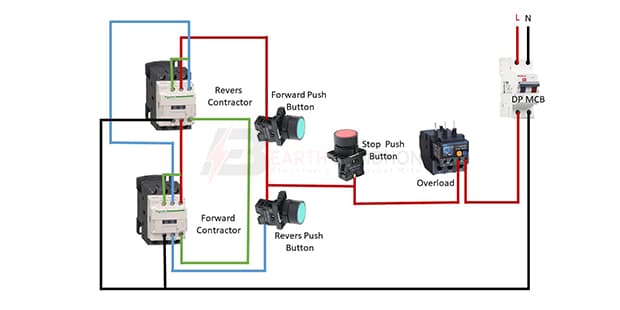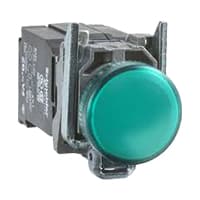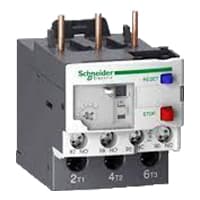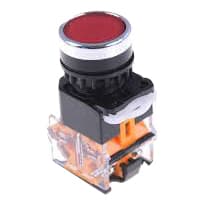Reverse Forward Starter Control Wiring:
This diagram shows how to make Reverse Forward Starter Control Wiring Diagram. In this circuit, we use a reverse magnetic contactor, a forward magnetic contactor, a reverse push switch, a forward push switch, a stop switch, an overload, and a DP MCB ( Double Pole Miniaute Circuit Breaker ). This circuit is very simple and easy to make. If you want to know more clear details about this circuit please check our youtube video below the post.
Advertisements
Components needed For this Project:
You can get the components from any of the sites below:
- Magnetic Contactor 40A [See Buy Click Amazon]
- Push Button NC Switch [See Buy Click Amazon]
- Push Button NO Switch [See Buy Click Amazon]
- Motor Protector Overload [See Buy Click Amazon]
- DP MCB 20A [See Buy Click Amazon]
*Please note: These are affiliate links. I may make a commission if you buy the components through these links. I would appreciate your support in this way!
Advertisements
Components used to make the Reverse Forward Starter Control Wiring:
A magnetic contactor is an electromagnetic switching device. It is generally used for controlling 3-phase Motors. The operation of a magnetic contactor is similar to that of a Relay. but a relay is used for low-power or low-voltage connections, and a magnetic contactor is used for high-power or high-voltage connections. As soon as the supply is applied to the magnetic contactor coil. its normally open contacts are closed and normally closed contacts are opened and the associated devices are also operated. This is how a magnetic contactor works.
02. NO Switch:
NO (Normally Open) Terms Refer to a Type of Dry Contact or Wet Contact. A Push to Make Switch Allows Electricity to flow Between its 2 contacts when held in. When the button is released, the Circuit is broken. This type of Switch is also known as A Normally Open (NO) Switching system. As its name implies, a Normally Open (NO) Switch Contact or “a Contact” is a Switch. Put very simply, a Normally Open Sensor will have no Current When in a Normal State But When it Enters an Alarm State it will have +5V applied to the Circuit.
Overload Protection is Protection Against a Running Overcurrent That Would Cause Overheating of The Protected Equipment. Hence, An Overload is Also a Type of Overcurrent flow. Overload Protection Typically Operates on an Inverse Time curve where the Tripping Time Becomes less as the Current Increases. This Overload Protector is an Essential Component for Many Sockets Power Systems. The Top-Quality Overload Protector can Effectively Protect Electrical Products from Power Surges.
04. DP MCB:
DP MCB In 2 Pole MCB, switching & protection is affected in phases and the neutral. A Double Pole or DP Switch is a Switch that Controls 2 Circuits at the same time. In terms of Residential Switching, this Normally means it Switches the live and Neutral at the same time. In Layperson Terms, Double Pole switches or DP Switches are Exclusively Designed to Control 2 Different Electrical Circuits at the same time, which allows the Appliances to Isolate safely and reliably. Fan or light Combinations and Medical Equipment are some of the many applications for DP Electrical Switches and Electrical components.
An NC (Normally Closed) Push Button is a Push Button That, In Its Default State, Makes Electrical Contact With The Circuit. An NC (Normally Closed) Push Button is a Push Button that, in its Default State, Makes electrical Contact With the Circuit. When The Button Is Pressed Down, The Switch no Longer Makes Electrical Contact And The Circuit is Now Open. When The Button is Not Pressed, Electricity Can Flow, But When it is Pressed The Circuit is Broken. This type Of Switch is Also known As a Normally Closed (NC) Switch.
Thank You for visiting the website. Keep visiting for more Updates.
Frequently asked questions
The Reversing Starter was a special type of push button starter wherein addition to starting/ stopping the motors the director of rotation of a 3-phase induction motor could be done by interchanging the connection of any two terminals of the supplies which is done through two separate contactors, one for forward and 3 Phase Motor.
The forward and reverse contactors were mechanically interlocked i.e., if one of them is closed the other cannot close. This is done to avoid a dead short circuit in case both the contactors close simultaneously. Also, electrical interlocking could be provided using the contactor's control contacts.
Two Magnetic Contactors are required to run a 3-phase motor forward and reverse From one Magnetic Contactor, 3 phase is directly supplied to the 3-phase motor through overload protection, and through the other Magnetic Contactor, 3 phase is given by changing two phases.
The two-point starter is used for starting DC series motors. It does not result in any harm because they gather speed quickly due to the small rotor inertia. In this case, the large starting current would die down quickly because of the fast rise in the back emf.
The reversing contactor was a kind of special product that could be built by combining 2 standard contactors with the use of a mechanical interlock unit. Reversing contactors were designed for demanding forward/reverse operating of 3-phase AC motors.
Read more Single Phase Wiring
What is a kilowatt-hour (kWh) | kwh formula | What does kwh mean
Introduction to Electrical Units and CircuitskW and kWh on your electricity bill As your home uses electricity during...
What is the Difference Between kVA | What does KVA mean | kVA formula
Difference Between KVA ExplainedWhat does KVA Mean? There are technical terms aplenty when it comes to generators, and...
Power Factor | Power Unit | Energy | Electricity Unit
Power factor definition | Calculating Power FactorPower Factor Values In a purely resistive circuit, the power factor...






0 Comments